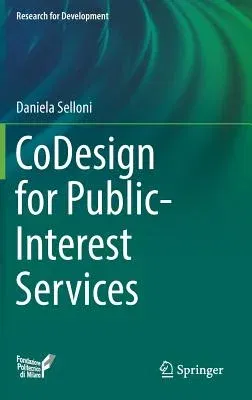This books focuses on co-design, and more specifically, on the various
forms co-design might take to tackle the most pressing societal
challenges, introducing public-interest services as the main application
field. To do so, it presents an extensive study conducted within a
particular community of residents in Milan: this is a social innovation
story integrated into the discipline of service design, which
simultaneously deepens the related concepts of co-design, co-production
and co-management of services.
Drawing upon this experience and further studies, the book presents the
idea of a collaborative infrastructure and its related infrastructuring
process in ten steps, in order to explore the issues of incubation and
replication of services and to extensively investigate the creation of
those experimental spaces in which citizen participation is fostered and
innovation in the public realm is pursued.
Lastly, the book develops other lines of reflection on co-design seen,
for example, as a form of cultural activism, as an instrument for
building citizenship, and as a key competence for the public
administration and thus as a public service itself. The idea of
co-design as a way to regenerate the practices of democracy is a
recurring theme throughout the book: co-design is a process that seeks
to change the state of things and it is intentionally presented as a
long and complex path in which the role of designer is not only that of
a facilitator, but also that of a cultural operator who contributes with
ideas and visions, hopefully fostering a real cultural change.

